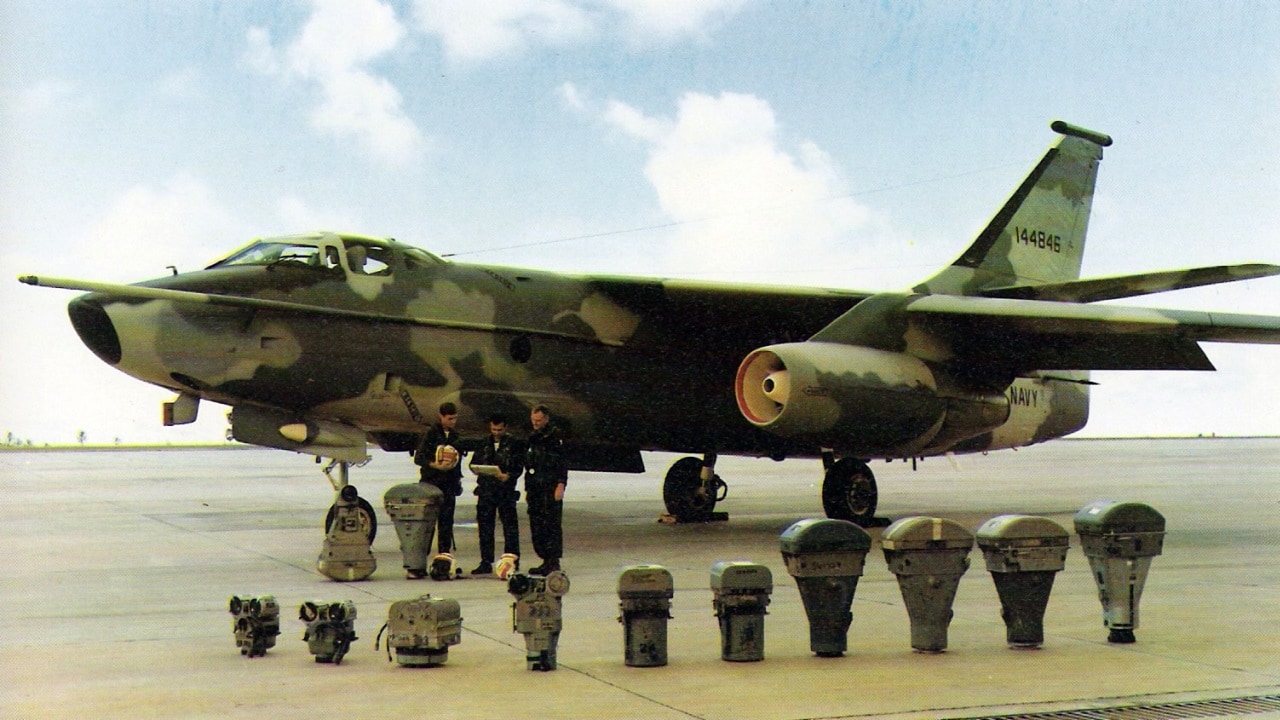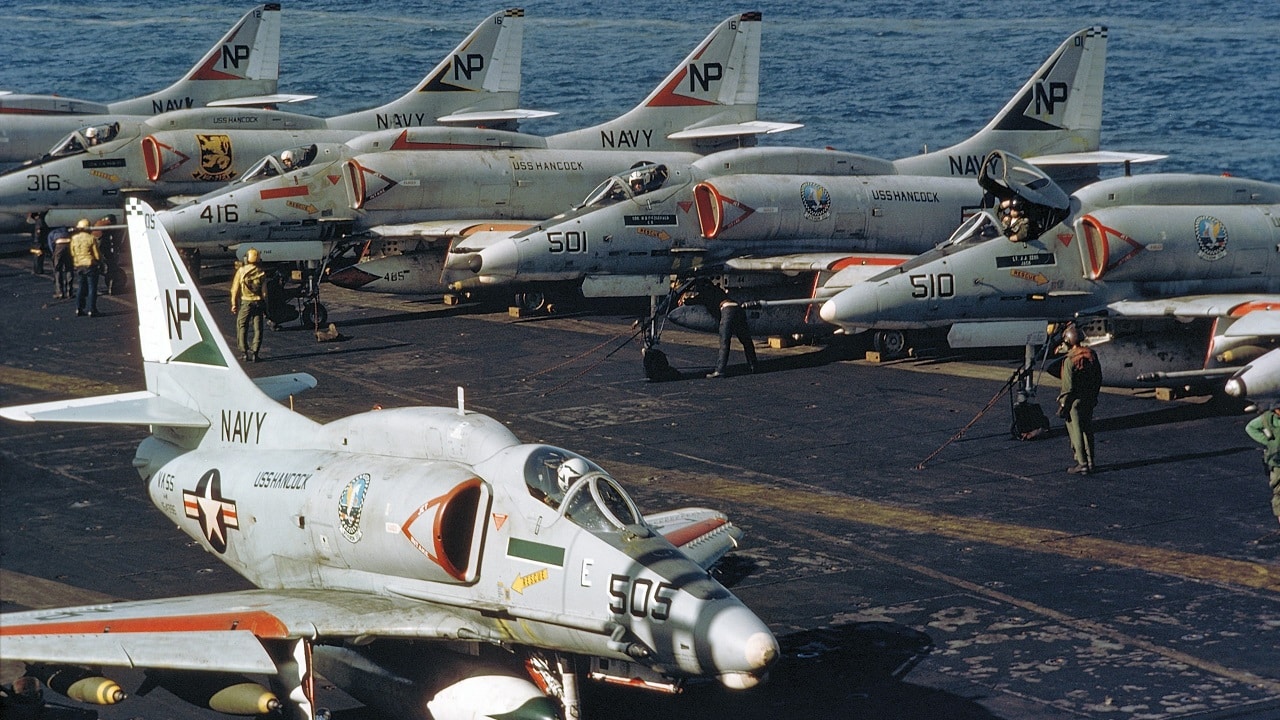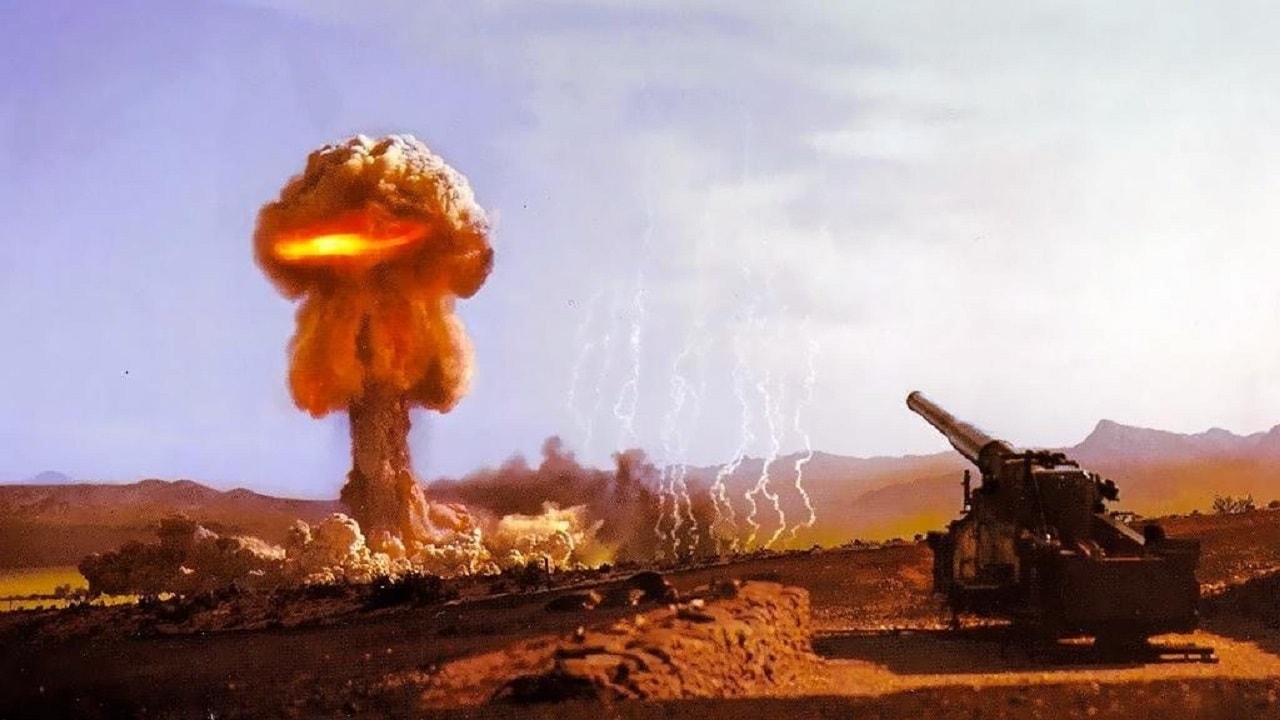Summary and Key Points: This analysis delves into the historical consideration of using US tactical nuclear weapons during the Vietnam War.
-A 1966 study by the elite JASONs advisory group concluded that using nukes against targets like the Ho Chi Minh Trail offered limited military gains while risking catastrophic diplomatic fallout and potential escalation with the USSR or China.

A camouflaged U.S. Navy Douglas RA-3B Skywarrior aircraft of reconnaissance squadron VAP-61 World Recorders (BuNo 144846) at Naval Air Station (NAS) Agana, Guam. Standing beside it are PH1c R. Laurie, LTJG D. Schwikert and LCDR Chas. D. Litford. On the ground in front of them are twelve cameras. VAP-61 was performed reconnaissance missions over Vietnam until it was disestablished on 1 July 1971. 144846 became an ERA-3B in 1982. It was later sold to Hughes Aircraft, inherited by Raytheon, (civil registration N547HA) and finally srcapped in 1999.
-Despite this, secret military planning (“Operation Fracture Jaw”) occurred in 1968, focused on Khe Sanh, but was swiftly cancelled by President Johnson upon discovery. The decision against nuclear use underscored the immense risks outweighing any potential tactical benefits, reinforcing the nuclear taboo.
What If the United States Had Nuked North Vietnam?
There were planning cells formed in the military to judge whether it was feasible to attack North Vietnam with tactical nuclear weapons.
As insane as that sounds, the US did want to know how the entire scenario would have played out.
In early 1966, the thought of nuking North Vietnam resulted in a classified study of tactical nuclear weapons use in Southeast Asia. The study’s authors, members of the JASONs, the Pentagon’s “wise men,” concluded that nuking the North was a terrible idea in any way, shape, or form.
Who Were The JASONs?
The JASONs were highly respected within the Department of Defense. They were defense consultants drawn from the cream of academia. They had the Pentagon’s ear and the freedom to choose their research topics.
“We were prompted to write this report by some remarks we heard at an informal party, probably in Spring 1966. A high-ranking military officer with access to President Johnson was heard to say, ‘It might be a good idea to toss in a nuke from time to time, just to keep the other side guessing.’ We had no way to tell whether the speaker was joking or serious. Just in case he was serious, we decided to do our study,” recalled mathematician Freeman Dyson.
After receiving the report, Defense Secretary Robert McNamara shut down any talks of using nuclear weapons.
But in 1968, unknown to President Johnson, the military set in motion plans to use tactical nuclear weapons and ship them to the theater commander without authorization or knowledge of the president.

U.S. Navy Douglas A-4F Skyhawk of Attack Carrier Air Wing 21 (CVW-21) are parked on the flight deck of the attack aircraft carrier USS Hancock (CVA-19), armed for a mission over Vietnam on 25 May 1972. Skyhawks NP-501 (BuNo 155046), -505 (BuNo 154996), and -510 were assigned to Attack Squadron 55 (VA-55) “Warhorses”, NP-316 to VA-212 “Rampant Raiders”, NP-412 and NP-416 to VA-164 “Ghost Riders”. The aircraft are armed with Mk 82 (500 lb/227 kg) and Mk 83 (1000 lb/454 kg) bombs. CVW-21 was assigned to the Hancock for a deployment to Vietnam from 7 January to 3 October 1972.
Under the code name “Fracture Jaw,” the military was drawing up plans to use tactical nuclear weapons, especially around the Khe Sanh area, which was being besieged by NVA forces. Johnson was furious when he found out and immediately shut down all elements of Fracture Jaw.
The JASONs were shut down in 2019.
The Consequences Far Outweigh the Returns From Tactical Nukes
Mountain passes such as the Mu Gia pass through the mountainous barrier along the North Vietnamese-Laotian border along the Ho Chi Minh Trail could be shut down, and large areas of forest blown down by tactical nukes very effectively, but only until the Vietnamese cleared new paths.
Tactical nukes against large tunnel systems would be exceptionally effective, but the US intelligence didn’t have pinpoint locations for the tunnels. And if they had the area, a conventional B-52 strike could have effectively dealt with it without the ramifications of going nuclear.
However, the US would have faced significant international diplomatic repercussions, potentially isolating itself internationally and damaging its credibility.
While tactical nuclear weapons might have been effective against specific targets, they would not have addressed the broader political and strategic factors contributing to the conflict.
With public opposition to the war growing to the extent that it had in 1968, the use of tactical nuclear weapons would have been catastrophic to public support.
A US nuclear strike against North Vietnam might have compelled the USSR and/or China to respond.
The Soviet Union could not afford another political disaster, only four years after the Cuban Missile Crisis, and might well have supplied North Vietnam with tactical nukes.
Thinking this wouldn’t escalate would have been a fool’s errand by the Johnson administration.
Nuclear weapons, the most powerful weapons ever devised, serve no other purpose but to prevent their use by others.
And it is a lesson that rings true today, countries know, even pariah nations such as Iran, that the key to stopping any future nuclear attack on them is to have the weapons themselves.
About the Author:
Steve Balestrieri is a 19FortyFive National Security Columnist. He served as a US Army Special Forces NCO and Warrant Officer. In addition to writing for 19FortyFive, he covers the NFL for PatsFans.com and is a member of the Pro Football Writers of America (PFWA). His work was regularly featured in many military publications

